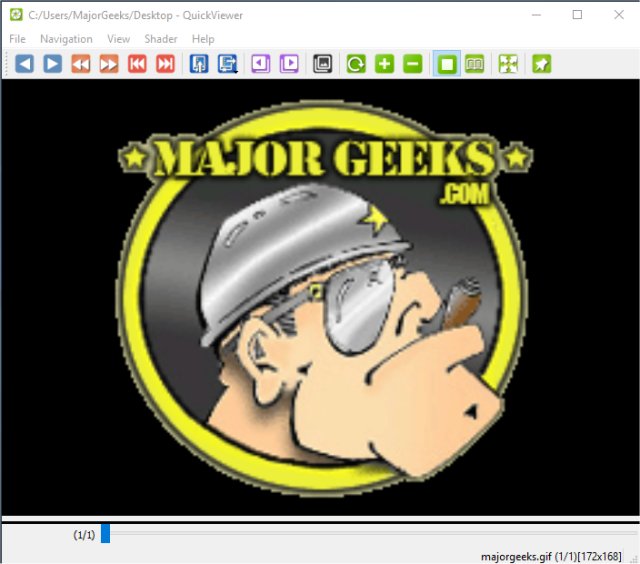QuickViewer 1.2.2 has been released, offering users an efficient OpenGL graphic image viewer that supports a wide range of image formats, including raw files. As an open-source and portable application, QuickViewer is designed for speed, pre-loading images for quick display. Users can easily view image dimensions and navigate through images using a status bar slider, although it does not provide image size information.
The interface includes five main tabs: File, Navigation, View, Shader, and Help. The File tab allows users to open images, access history, or automatically load the last viewed image. The Navigation tab enables users to move easily between images, bookmark favorites, and run a slideshow of loaded images. The View tab offers customization options for menus, full-screen mode, and image scaling, rotation, and fitting. The Shader tab includes various resampling and filtering options like Bilinear, Bicubic, Lanczos, and Nearest Neighbor.
Unlike many image viewers that become cluttered with unnecessary features, QuickViewer maintains a streamlined interface that prioritizes speed and efficiency while still offering essential tools for image browsing. It remains a quick, free, and straightforward choice for anyone looking to manage and view their image collection effectively.
1. Enhanced File Management: Introducing a more robust file management system that allows users to organize their images into folders or albums within the application could streamline the browsing process.
2. Multi-Platform Support: Extending support to mobile platforms could allow users to access and view their images on various devices, making QuickViewer more versatile.
3. Cloud Integration: Adding features for cloud storage integration would enable users to access their images stored in services like Google Drive or Dropbox directly from QuickViewer.
4. Image Editing Tools: While the focus is on being a simple viewer, incorporating basic editing tools like cropping, brightness adjustment, or filters could attract a broader audience looking for lightweight image manipulation.
5. User Community and Support: Developing a community forum or user support section within the application could help users share tips, troubleshooting advice, and feature requests, fostering a sense of community around the software.
These enhancements could ensure QuickViewer remains competitive in the evolving landscape of image viewing software, attracting both new users and retaining existing ones
The interface includes five main tabs: File, Navigation, View, Shader, and Help. The File tab allows users to open images, access history, or automatically load the last viewed image. The Navigation tab enables users to move easily between images, bookmark favorites, and run a slideshow of loaded images. The View tab offers customization options for menus, full-screen mode, and image scaling, rotation, and fitting. The Shader tab includes various resampling and filtering options like Bilinear, Bicubic, Lanczos, and Nearest Neighbor.
Unlike many image viewers that become cluttered with unnecessary features, QuickViewer maintains a streamlined interface that prioritizes speed and efficiency while still offering essential tools for image browsing. It remains a quick, free, and straightforward choice for anyone looking to manage and view their image collection effectively.
Extension
In addition to its core features, QuickViewer 1.2.2 could benefit from further enhancements to elevate user experience. Potential future updates could include:1. Enhanced File Management: Introducing a more robust file management system that allows users to organize their images into folders or albums within the application could streamline the browsing process.
2. Multi-Platform Support: Extending support to mobile platforms could allow users to access and view their images on various devices, making QuickViewer more versatile.
3. Cloud Integration: Adding features for cloud storage integration would enable users to access their images stored in services like Google Drive or Dropbox directly from QuickViewer.
4. Image Editing Tools: While the focus is on being a simple viewer, incorporating basic editing tools like cropping, brightness adjustment, or filters could attract a broader audience looking for lightweight image manipulation.
5. User Community and Support: Developing a community forum or user support section within the application could help users share tips, troubleshooting advice, and feature requests, fostering a sense of community around the software.
These enhancements could ensure QuickViewer remains competitive in the evolving landscape of image viewing software, attracting both new users and retaining existing ones
QuickViewer 1.2.2 released
QuickViewer is an OpenGL graphic image viewer for browsing most image formats including raw files.


